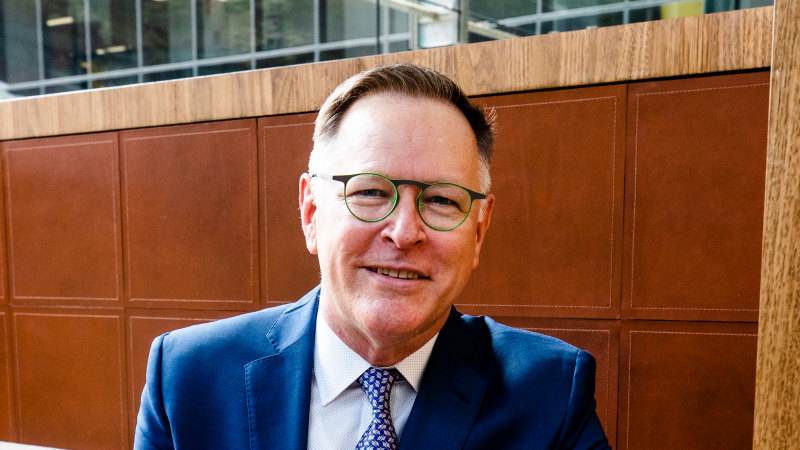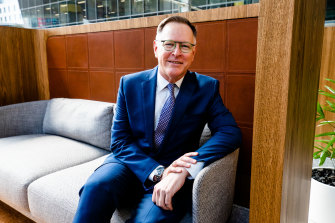Westpac’s chief executive of consumer and business banking, Chris de Bruin, says the vast majority of mortgage customers can manage a series of interest rate rises, though the bank is watching closely for weaker discretionary spending.
Before Tuesday’s widely expected increase in official interest rates, de Bruin on Sunday played down the chances of widespread mortgage stress this year, saying consumers and businesses were prepared for rates lifting from abnormally low levels.
Chris de Bruin, chief executive of consumer and business banking at Westpac.Credit:Edwina Pickles
De Bruin, one of Westpac’s most senior executives, made the remarks as a new survey by the bank found small businesses remained upbeat about the economy’s outlook, despite the rising cost of living looming as the biggest challenge on the horizon.
Money markets are betting the RBA will this week lift the cash rate by 0.25 or 0.4 percentage points, and have priced in a series of rate rises that would take official rates above 2 per cent by the end of this year.
De Bruin pointed out that most economists expect the RBA to move less aggressively than this, and he said households were well-prepared for higher rates, having built up savings and offset account balances during the pandemic. Westpac economists predict the cash rate will hit 1.75 per cent by the end of the year, up from 0.35 per cent today.
“Even at 1.5 per cent we are still talking about very, very low interest rates,” de Bruin said in an interview with The Sydney Morning Herald and The Age.
‘I think the important thing to recognise is that we’ve been through a long period of ultra-low interest rates, so this is a natural reversion to some degree.’
“It isn’t that we’re projecting a massive shock in interest rates. It’s likely to be steady and it’s likely to be at a point that’s affordable for the vast majority of Australians.”
De Bruin said there would inevitably be hardship for some borrowers “at the margin”. But he said household spending was strong across most of the economy, businesses were generally confident, and argued both consumers and businesses could handle higher rates.
“I think the important thing to recognise is that we’ve been through a long period of ultra-low interest rates, so this is a natural reversion to some degree,” he said.
“The money was never going to be free forever, and most businesses we talk to knew that. And what we’ve seen people do during particularly the COVID period, is work very hard at building their own resilience.”
Westpac will on Monday release a new survey of more than 500 small businesses, which suggests the rising cost of living is the biggest concern for small firms, followed by worries about inflation, rising rates, and COVID-19-related disruptions.
Most firms believed the economy would rebound further over the next year, but de Bruin said one area that could slow was discretionary spending, such as at restaurants.
“We’ve had a little bit of a mini-boom in hospitality, which has gone well. We see that being sustaining, but some of the heat may come out of that as the cost of living goes up. So that’s the part to watch,” he said.
As mortgage lending slows, business lending is a critical battleground for banks, and Westpac is this week announcing a partnership with accounting giant MYOB, which will give eligible bank customers access to the accounting software.
While banks have generally played down the potential for mortgage stress, the Australian Prudential Regulation Authority chairman Wayne Byres last week said people who had taken out ultra-cheap fixed-rate loans could face “repayment shock” and said falling house prices could compound the difficulty for some borrowers.
The risk of bad debts has also emerged as a concern for bank investors, though recent research from Citi’s Brendan Sproules argued the major banks still had excess provisions to withstand a “reasonable significant deterioration” in the economy.
The Market Recap newsletter is a wrap of the day’s trading. Get it each weekday afternoon.
Most Viewed in Business
From our partners
Source: Read Full Article

